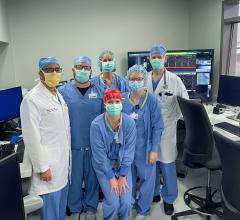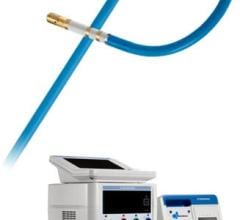May 14, 2012 – Endosense said there has been strong interest and significant advancement in the move toward making contact-force sensing a standard-of-care in catheter ablation procedures. Participating at the Heart Rhythm (HRS) 2012 meeting last week in Boston, the company noted a wealth of new clinical abstracts and a new HRS/EHRA/ECAS consensus statement as key validation points supporting the value of the sensory parameter in cardiac ablation.
Among the clinical data presented at Heart Rhythm 2012 were more than 20 abstracts exploring the use of contact-force sensing during catheter ablation procedures; these abstracts build on more than 50 clinical papers and presentations on the subject since 2010 alone. Fourteen of the new Heart Rhythm 2012 abstracts featured Endosense’s TactiCath, the first force-sensing catheter to give the electrophysiologist a real-time, objective measure of contact force during the catheter ablation procedure.
Key new data on the TactiCath included the results of Endosense’s EFFICAS II clinical study, presented by Dr. Josef Kautzner (Prague, Czech Republic) in “Contact Force, FTI [Force Time Integral] and Lesion Continuity Are Critical to Improve Durable PV Isolation: EFFICAS II Results.” The data showed that contiguous lesions created following the Contact Force Guidelines identified in EFFICAS I (CF above 10 g and FTI above 400 gs) resulted in superior ablation outcomes, with durable pulmonary vein isolation of up to 98 percent found at three months via invasive follow-up. Several other studies presented showed the importance of FTI as a determinant for ablation success or for a reduction of procedure time.
Additional force sensing-related topics discussed at the Heart Rhythm meeting include the 2012 HRS/EHRA/ECAS Expert Consensus Statement on Catheter and Surgical Ablation of Atrial Fibrillation, which was released in March. For the first time, the consensus statement recognizes contact-force sensing as a parameter that has the potential to improve the efficacy and safety of catheter ablation procedures.
“The field of contact-force sensing is clearly experiencing tremendous momentum, as more and more scientific evidence and clinical use point to its value in improving outcomes and shortening procedure times of catheter ablation procedures,” said Jan Keltjens, Endosense president and chief executive officer. “Endosense is proud to have pioneered the concept of contact-force sensing in catheter ablation and to have also validated it with the groundbreaking TOCCATA and EFFICAS studies, and we are very pleased to remain at the forefront of this exciting field today.”
Endosense’s leadership in the field of contact-force sensing dates back to the first abstract on the TactiCath at Heart Rhythm 2006. Since that time, the company has conducted a number of clinical studies demonstrating the safety and effectiveness of contact-force sensing over traditional ablation technologies, and has also nearly completed enrollment in the pivotal TOCCASTAR investigational device exemption clinical trial.
Biosense Webster also showed its version of force sensing catheters at its booth during HRS 2012. The company showed its CE-marked Smart Touch system, which is in its final follow up phase of its investigational device exemption (IDE) trial in the United States. The company hopes to submit the device for final U.S. Food and Drug Administration review in 2013.
Smart Touch uses a force sensing system based on pressure applied to the tip, which integrates a nitinol spring and pressure sensor. The system was developed to integrate with the Biosense Carto3 mapping system.
For more information: www.endosense.com


 October 30, 2024
October 30, 2024 








